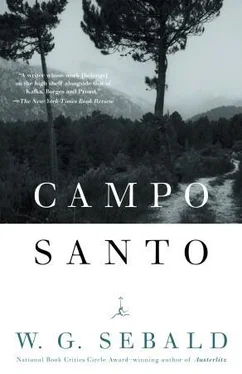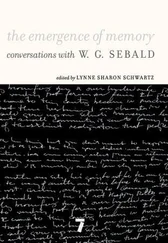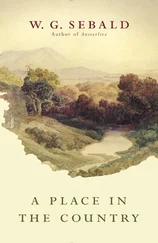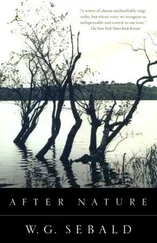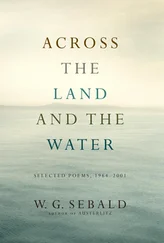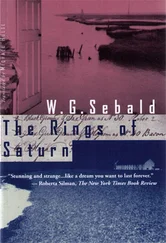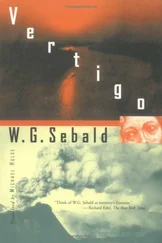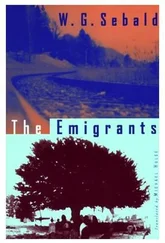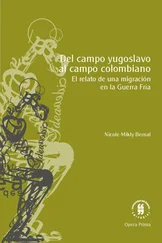An Attempt at Restitution
I can still see us in the days before Christmas 1949 in our living room above the Engelwirt inn in Wertach. My sister was eight at the time, I myself was five, and neither of us had yet really got accustomed to our father, who since his return from a French POW camp in February 1947 had been employed in the local town of Sonthofen as a manager (as he put it), and was at home only from Saturday to midday on Sunday. In front of us, open on the table, lay the new Quelle mail-order catalog, the first I ever saw, containing what seemed to me a fairy-tale assortment of wares, from which it was decided in the course of the evening and after long discussions, in which our father got his sensible way, to order a pair of camel’s-hair slippers with metal buckles for each of us children. I think zip fastenings were still quite rare at the time.
But in addition to the camel’s-hair slippers we ordered a card game called the Cities Quartet based on pictures of the cities of Germany, and we often played it during the winter months either when our father was at home or when there was another visitor to make a fourth. Have you got Oldenburg, we asked, have you got Wuppertal, have you got Worms? I learned to read from these names, which I had never heard before. I remember that it was a long time before I could imagine anything about these cities, so different did they sound from the local place-names of Kranzegg, Jungholz, and Unterjoch, except the places shown on the cards in the game: the giant Roland, the Porta Nigra, Cologne Cathedral, the Crane Gate in Danzig, the fine houses around a large square in Breslau.
In fact, in the Cities Quartet, as I reconstruct it from memory, Germany was still undivided — at the time of course I thought nothing of that — and not only undivided but intact, for the uniformly dark brown pictures of the cities, which gave me at an early age the idea of a dark fatherland, showed the cities of Germany without exception as they had been before the war: the intricate gables below the citadel of the Nürnberger Burg, the half-timbered houses of Brunswick, the Holsten Gate of the Old Town in Lübeck, the Zwinger and the Brühl Terraces.
The Cities Quartet marked not only the beginning of my career as a reader but the start of my passion for geography, which emerged soon after I began school: a delight in topography that became increasingly compulsive as my life went on and to which I have devoted endless hours bending over atlases and brochures of every kind. Inspired by the Cities Quartet, I soon found Stuttgart on the map. I saw that compared with the other German cities it was not too far from us. But I could not imagine a journey to it, any more than I could think what the city itself might look like, for whenever I thought of Stuttgart all I could see was the picture of Stuttgart Central Station on one of the cards in the game, a bastion of natural stone designed by the architect Paul Bonatz before the First World War, as I later learned, and completed soon after it, a building that in its angular brutalist architecture already to some extent anticipated what was to come, perhaps even, if I may be permitted so fanciful a mental leap, anticipated the few lines written by an English schoolgirl of about fifteen (judging by the clumsy handwriting) on holiday in Stuttgart to a Mrs. J. Winn in Saltburn in the county of Yorkshire on the back of a picture postcard, which came into my hands at the end of the 1960s in a Salvation Army junk shop in Manchester, and which shows three other tall buildings in Stuttgart and Bonatz’s railway station, curiously enough from exactly the same viewpoint as in our long-lost German Cities Quartet game.
Betty, for such was the name of the girl spending the summer in Stuttgart, writes on August 10, 1939, barely three weeks before the outbreak of the Second World War — when my father was already approaching the Polish border in Slovakia with his convoy of trucks — Betty writes that the people in Stuttgart are very friendly, and she has “been out tramping, sunbathing and sightseeing, to a German birthday party, to the pictures and to a festival of the Hitler Youth.”
I acquired this card, with the picture of the railway station and the message on the back, on one of my long walks through the city of Manchester, before I had ever been to Stuttgart myself. When I was growing up in the Allgäu in the postwar period you did not travel much, and if you did go for an outing now and then as the “economic miracle” set in, it was by bus to the Tyrol, to Vorarlberg, or at most into Switzerland. There was no call for excursions to Stuttgart or any of the other cities that still looked so badly damaged, and so until I left my native land at the age of twenty-one it was still largely unknown territory to me, remote and with something not quite right about it.
It was May 1976 when I first got out of a train at Bonatz’s station, for someone had told me that the painter Jan Peter Tripp, with whom I had been to school in Oberstdorf, was living in Reinsburgstrasse in Stuttgart. I remember that visit to him as a remarkable occasion, because with the admiration I immediately felt for Tripp’s work it also occurred to me that I too would like to do something one day besides giving lectures and holding seminars. At the time Tripp gave me a present of one of his engravings, showing the mentally ill judge Daniel Paul Schreber with a spider in his skull — what can there be more terrible than the ideas always scurrying around our minds? — and much of what I have written later derives from this engraving, even in my method of procedure: in adhering to an exact historical perspective, in patiently engraving and linking together apparently disparate things in the manner of a still life.
I have kept asking myself since then what the invisible connections that determine our lives are, and how the threads run. What, for instance, links my visit to Reinsburgstrasse with the fact that in the years immediately after the war it contained a camp for so-called displaced persons, a place which was raided on March 20, 1946, by about a hundred and eighty Stuttgart police officers, in the course of which, although the raid discovered nothing but a black market trade in a few hen’s eggs, several shots were fired and one of the camp inmates, who had only just been reunited with his wife and two children, lost his life.
Why can I not get such episodes out of my mind? Why, when I take the S-Bahn toward Stuttgart city center, do I think every time we reach Feuersee Station that the fires are still blazing above us, and since the terrors of the last war years, even though we have rebuilt our surroundings so wonderfully well, we have been living in a kind of underground zone? Why did it seem to the traveler on a winter night, coming from Möhringen and getting his first sight from the back of a taxi of the new administrative complex of the firm of Daimler, that the network of lights glittering in the darkness was like a constellation of stars spreading all over the world, so that these Stuttgart stars are visible not only in the cities of Europe, the boulevards of Beverly Hills and Buenos Aires, but wherever columns of trucks with their cargos of refugees move along the dusty roads, obviously never stopping, in the zones of devastation that are always spreading somewhere, in the Sudan, Kosovo, Eritrea, or Afghanistan?
And how far is it from the point where we find ourselves today back to the late eighteenth century, when the hope that mankind could improve and learn was inscribed in handsomely formed letters in our philosophical firmament? At the time Stuttgart, nestling amid vineyards and overgrown slopes, was a little place of some twenty thousand souls, some of whom, as I once read, lived on the top floors of the towers of the collegiate church. One of the sons of the country, Friedrich Hölderlin, proudly addresses this small, still sleepy little Stuttgart where cattle were driven into the marketplace early in the morning to drink from the black marble fountains, as the princess of his native land, and asks her, as if he already guessed at the coming dark turn that history and his own life would take: receive me kindly, stranger that I am . Gradually an epoch of violence then unfolds, and with it comes personal misfortune. The giant strides of the Revolution, writes Hölderlin, present a monstrous spectacle. The French forces invade Germany. The Sambre-Maas army moves toward Frankfurt, where after heavy bombardment the utmost confusion reigns. With the Gontard household, Hölderlin has fled that city for Kassel by way of Fulda. [11] The famous poet Friedrich Hölderlin (1770–1843) grew up in Nörtingen near Stuttgart. He had an unhappy love affair with the wife of his employer, the banker J. F. Gontard, in whose house he was a tutor. Around 1802 he showed the first signs of psychological distrubance, and spent most of the rest of his life suffering from mental illness. Much of his poetry celebrates the ideals of ancient Greece.
On his return he is increasingly torn between his wishful imaginings and the real impossibility of his love, which transgresses against the class system. Yes, he sits for days on end with Susette in the garden cabinet or the arbor, but he feels the humiliating aspect of his position all the more oppressive. So he must leave again. He has gone on so many walking tours in his life of barely thirty years, in the Rhone mountains, the Harz, to the Knochenberg, to Halle and Leipzig, and now, after the Frankfurt fiasco, back to Nürtingen and Stuttgart.
Читать дальше
